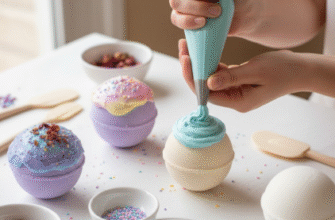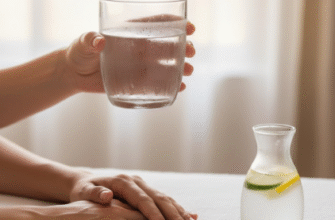The simple act of soaking is something woven into the fabric of our daily lives, often performed without a second thought. From letting dirty dishes sit in the sink to easing into a warm bath, soaking serves many purposes. But have you ever paused to wonder if there’s an optimal duration? How long should you actually soak something to get the most out of the process, without going too far? The truth is, there isn’t one single answer. The perfect soak time is less about a magic number and more about understanding the what and the why.
Soaking for Comfort: The Art of the Bath
Perhaps the most common association with soaking is the relaxing bath. After a long day, sinking into warm water can feel like a necessary reset. But how long should you stay submerged? Many find that a bath lasting between 15 and 30 minutes hits the sweet spot. This duration is often enough to feel relaxed and allow any bath additives, like fragrant oils or bath bombs (chosen for scent and ambiance, of course), to disperse nicely. Staying in much longer can sometimes be counterproductive. The water inevitably begins to cool, turning a cozy experience into a chilly one. Furthermore, prolonged immersion can sometimes lead to that familiar wrinkly skin, which happens as the outer layer absorbs water. While generally harmless, it’s a sign you’ve been soaking for quite a while. The key here is comfort. Pay attention to the water temperature and how you feel. When the warmth fades or you start feeling restless, it’s probably time to pull the plug.
Temperature plays a significant role too. Very hot water might feel intense initially but can be draining and isn’t always ideal for extended periods. Lukewarm water might be more comfortable for a longer, more meditative soak. Experimenting with temperatures and durations, within safe limits, will help you find your personal preference for maximum relaxation without overdoing it.
Conquering Grime: Soaking for Cleanliness
Moving from personal comfort to household chores, soaking is a powerful tool against stubborn messes. Think about that baking dish with burnt-on cheese or a frying pan sporting tenacious grease. Trying to scrub these immediately is often an exercise in frustration and wasted elbow grease. Soaking comes to the rescue by loosening the offending grime.
How long is needed? This is highly variable.
- Lightly soiled dishes: Often, a quick soak of 10-20 minutes while you clear the table is enough to make washing up much easier.
- Moderately dirty pots and pans: For things like dried-on sauce or oatmeal, an hour or two might be necessary. Warm or hot water generally works faster here, helping to dissolve or soften the residues more effectively.
- Heavily encrusted items: That lasagna dish you forgot about? It might need a much longer soak, potentially several hours or even overnight. Patience is key. The water gives the baked-on food time to rehydrate and release its grip on the surface.
The material matters too. You might soak a sturdy ceramic dish overnight, but you’d be more cautious with delicate glassware or certain metals that could tarnish or warp with prolonged water exposure. Always consider the item itself. Similarly, when soaking stained laundry, the type of fabric and the nature of the stain dictate the duration and the soaking solution (like cool water for blood stains or a specialized stain remover solution). Some stains lift quickly, while others require a more extended treatment before washing.
Temperature Considerations in Cleaning Soaks
Unlike a bath where comfort dictates temperature, for cleaning, effectiveness is often the goal. Hot water is generally better at dissolving grease and sugars. Think sticky jam jars or oily pans. However, hot water can sometimes set protein-based stains (like egg or blood) or cause certain dyes to bleed. For these, or for delicate fabrics, cold or cool water is often the recommended starting point for soaking. Always check care labels for fabrics, and when in doubt with dishes, warm water is usually a safe bet.
Soaking items to clean them works primarily through hydration and softening. Water molecules penetrate the dried-on food or dirt particles, causing them to swell and loosen their bond with the underlying surface. This process significantly reduces the physical effort needed for subsequent scrubbing or washing. Additives like soap can further enhance this by breaking down oils and reducing water tension.
Preparation Soaks: A Kitchen Staple
Soaking isn’t just for getting clean or relaxing; it’s a fundamental step in preparing certain foods. Dried beans, legumes, grains, and even some nuts and seeds often benefit from a good soak before cooking.
Why soak these foods? The primary reasons usually relate to texture and cooking time.
- Dried Beans and Legumes: These are perhaps the most famous candidates for soaking. They are typically soaked for several hours, often 6-8 hours or overnight, in plenty of cold water. This rehydrates the beans, which significantly reduces their cooking time. It also helps them cook more evenly, preventing some beans from being mushy while others are still hard.
- Grains: Certain whole grains, like farro or barley, can also benefit from soaking. A few hours can soften the tough outer layers, leading to a more tender final product and potentially shorter cooking times. Brown rice sometimes gets a short soak (30 minutes to an hour) to improve texture.
- Nuts and Seeds: Soaking nuts (like almonds or cashews) is often done before blending them for plant-based milks or creams. Soaking softens them considerably, making them easier to blend into a smooth consistency. Depending on the nut, soaking times can range from 2 to 12 hours. Smaller seeds like chia or flax are “soaked” to create gels, a process that happens much faster, often within minutes.
The duration here is critical. Under-soaking beans might mean they still take a very long time to cook and may not reach the desired tenderness. Over-soaking, especially in warm environments, isn’t typically recommended, and it’s generally advised to change the soaking water if soaking for extended periods, especially for beans. The goal is rehydration and softening to improve the final cooked result, not indefinite storage in water.
Finding Your Own ‘Just Right’
As we’ve seen, the ideal soaking time is entirely context-dependent. There’s no universal rule that applies equally to taking a bath, cleaning a pot, or prepping beans. The key is to understand the purpose of the soak and observe the results.
Factors influencing the optimal duration include:
- The item being soaked: Is it porous? Delicate? Dense? Alive (like beans)?
- The reason for soaking: Relaxation? Cleaning? Softening for cooking? Removing a stain?
- The soaking liquid: Is it plain water? Is it hot or cold? Does it contain salt, soap, vinegar, or other agents?
- The desired outcome: Are you looking for slight softening, complete rehydration, or maximum grime removal?
Instead of searching for a fixed number, think of soaking as a process you can manage. Check on your soaking dishes – has the grime loosened? Taste-test your soaking beans (before cooking, if appropriate for the type!) – are they pliable? Notice how you feel in the bath – still comfortable and warm? Use these observations to decide whether to continue soaking or stop.
Always exercise caution with water temperature, especially for baths, to avoid burns. When soaking food items, particularly for long durations, ensure you are following safe food handling practices. Use clean water and consider refrigerating items like beans during long soaks, especially in warmer climates, changing the water periodically as often recommended in recipes.
Ultimately, mastering the art of the soak comes down to a little knowledge and a lot of attention. Whether you’re aiming for a cleaner dish, a softer bean, or just a few peaceful moments in the tub, understanding the variables helps you determine how long is long enough to achieve your goal without going overboard. Don’t be afraid to experiment slightly, observe the effect, and adjust accordingly next time. That way, you’ll always get the maximum benefit from your soaking time.








